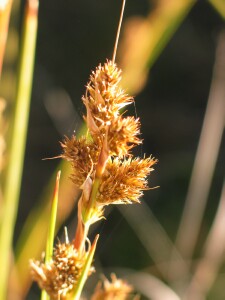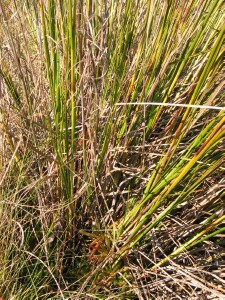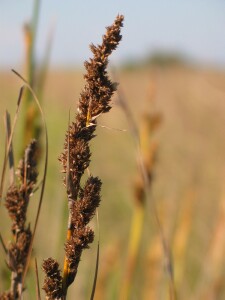Cutting Sedge
Back | Salinity Indicator Plants Home | Common name home | Scientific name home | Photo Gallery | Glossary
| Cutting Sedge photos | Family: Sedge (Cyperaceae) |
| Scientific Name: | Gahnia trifida | 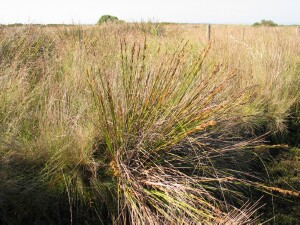 Cutting Sedge plant Photo: A J Brown | |||||
Other Common Name: | Coast Saw-sedge | ||||||
Status: | Native to the southern coasts of Australia. | ||||||
Plant Description: | Tussock forming perennial with stems 55-100 cm long and 4 mm wide. Leaf-blades are flat to inrolled and spreading, coarsely rough to the touch. Leaf-sheaths are dark brown to black, but dull. Flower-heads are narrow, erect, 30-70 cm long, with 1 flowered spikelets. Spikelets have 4-7 glumes with the lowest 2 or 3 shorter than the rest. Anthers are 1.3-2 mm long. Fruit is an oblong to narrowly obovoid, grey to black nut, three-sided and more or less smooth and shining, 2-2.6 mm long and 0.8-1 mm wide. | ||||||
Habitat: | Fringing coastal saltmarsh. Sometimes near inland saline lakes and watercourses.
| ||||||
Comments: | Cutting Sedge differs from Chaffy Saw-sedge (Gahnia filum) by its smaller nuts, more spikelet glumes and coarser leaves. Used for straw brooms in South Australia. |
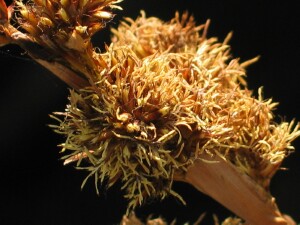 Anthers exserted from spikelets of Cutting Sedge Photo: A J Brown | 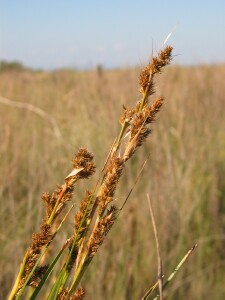 Cutting Sedge flowerhead Photo: A J Brown |
|
|
|

